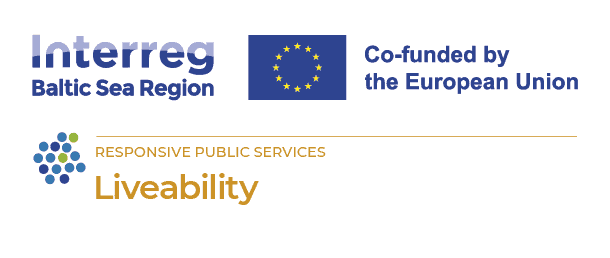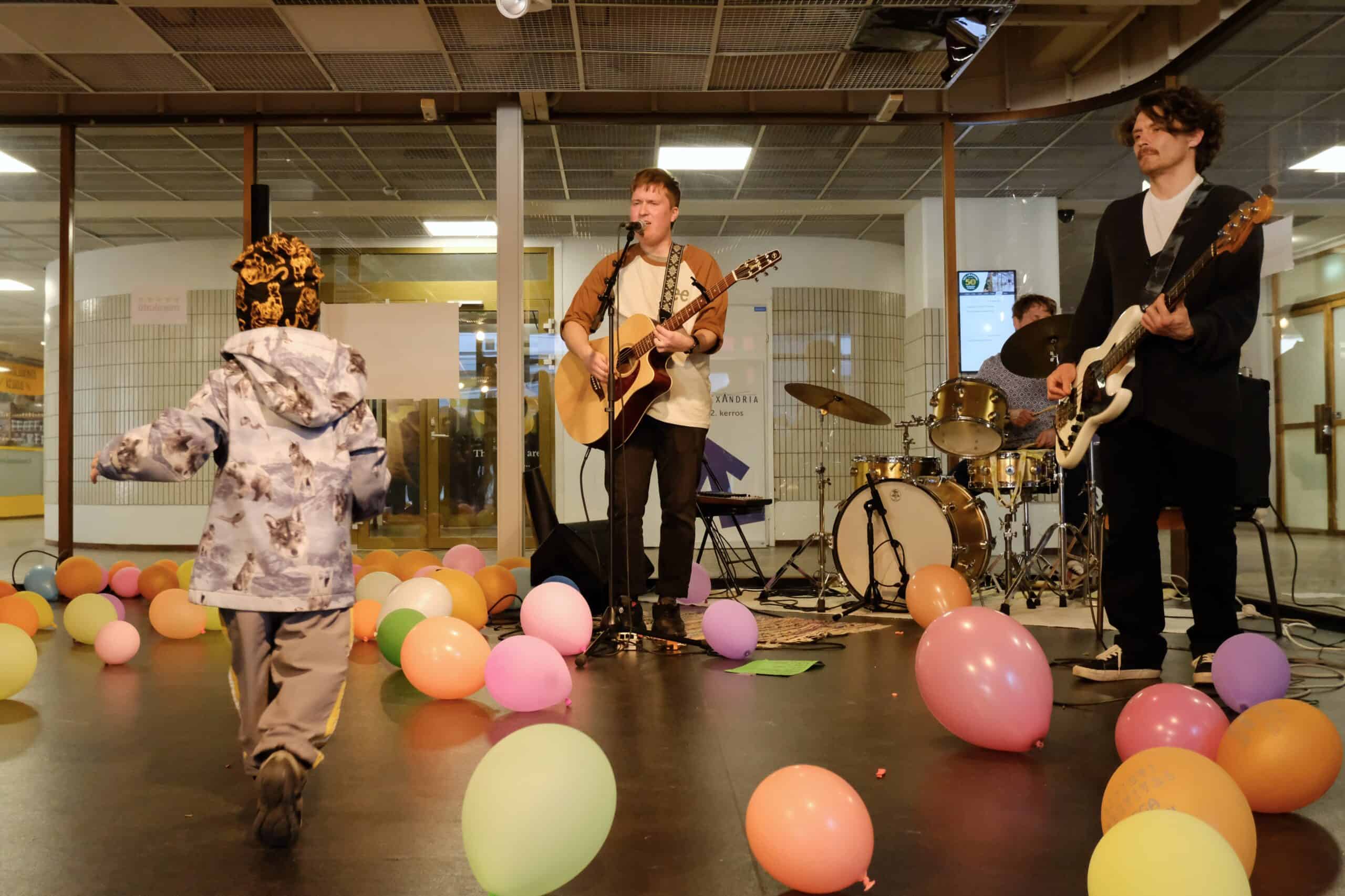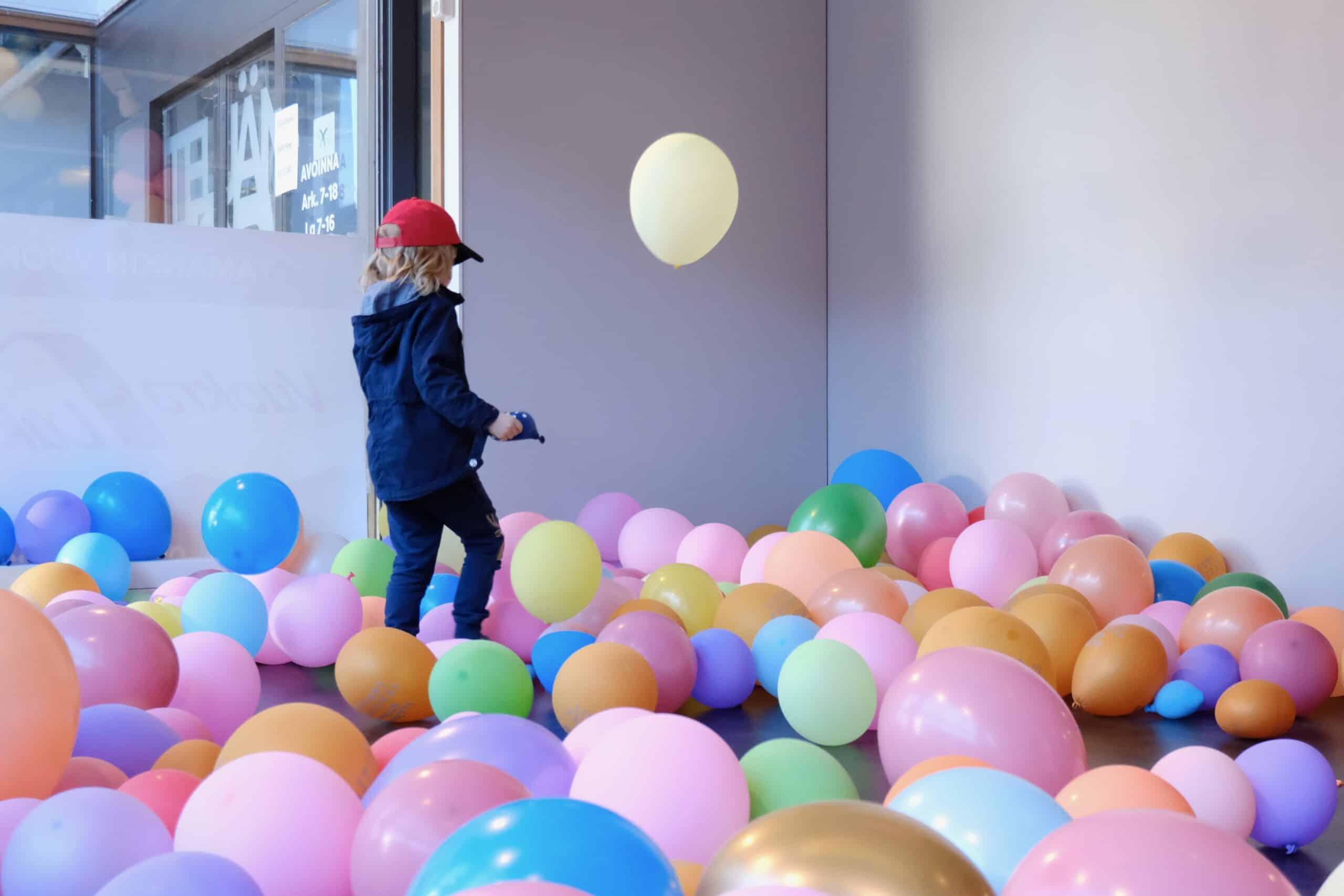
Revitalise vacant spaces in the city centre - Pori, Finland
30 April 2025
The City of Pori aims to revitalize vacant spaces in the city center through this pilot project. Former retail spaces, currently unused, are being transformed into new areas for living and working. These spaces will host a variety of events, which are excellent for bringing people together and encouraging them to become active participants in their city. Co-creating in these spaces will foster a sense of belonging and contribute to a vibrant city center for everyone.
Pori Old Bus Station
WHY | Purpose
The main goal of the Liveability pilots in Pori is to bring back life to the city centre and revitalise vacant spaces. The city’s attractiveness has gradually diminished and has yet to fully recover since the COVID crisis.
The Pori city centre consists of public and private buildings and spaces that have potential to enhance the city’s vibrancy and attractiveness.
The project offers a user-friendly space for citizens to organize their own events in city-owned properties, alleviating concerns about rent and electricity expenses. Organizing long-term events in privately owned properties can be challenging, but having a culture-friendly entrepreneur is crucial for effectively utilizing these business spaces.
HOW | Field of Action
Asema44 – New Roots in an Old Station.
Pori’s former bus station, now Asema44, is a cultural hub where collaboration, creativity, green space, and sustainability come together to shape the future of the city through shared development.
Cre44tive Overnighters
- An overnight co-creation format by Asema44 that sparks bold ideas and cross-sector collaboration. In Pori’s old bus station, citizens gather to reimagine the space through creative workshops, dialogue, and shared experimentation.
Passengers of Time
- A participatory event at Pori’s old bus station, co-organized with engaged actors from the Old Bus Station team. City residents are invited to share memories and stories connected to the site—turning personal histories into a collective archive of place.
- The same exhibition concept will also be presented in collaboration with the regional museum.
WHO | Actors
- Public administration
- Citizens of Pori
- Private sector: restaurant owner
- Satakunta Museum
- Porin linjat – public transportation
- University Consortium of Pori
- City of Pori – Technical and Cultural Unit
Lessons learned
Cross-sector collaboration opens surprising doors
The Cre44tive Overnighters concept facilitated new encounters—such as between the Department of Sports, City of Pori and a fresh workshop ideas. This resulted in lasting collaboration between the arts and Sports Unit.
Low threshold – high impact
The open and approachable space brought together both local residents and newcomers. Even small-scale events and experiments led to significant networking opportunities and deeper social engagement.
Cultural spaces can act as laboratories for urban development
Asema44 has functioned as an incubator, a place where new forms of cultural services have been tested in collaboration with the city, artists, and various local actors.
A green space was sown – now it blooms
Cre44tive Overnighters gathered ideas on the future of the space, many rooted in urban greenery and nature connection.
These ideas seeded a new green space, developed with Pori’s green bank and a local gardening sponsor.
Now, plants take root, the community cares for them, and sound art grows alongside—music generated from the plants’ vital signals.
Pollination has occurred – and new ideas are sprouting.
Potential follow up activities
Asema44 – Growing Momentum
Asema44 has also received support from the Finnish Cultural Foundation, which enables the continuation of events and programming throughout the upcoming year.
Cre44tive Overnighters 2.0
Revive the overnight event series to ignite bold cross-sector ideas—connecting art, environment, and urban renewal through spontaneous collaboration.
International Artist Exchange
Host site-specific residencies for artists from other Liveable Cities hubs to deepen translocal dialogue and co-create in the Asema44 context.
Scaling Up Asema44
With access to more space in the old bus station, Asema44 could evolve into a flagship for liveability—uniting cultural, ecological, and social innovation under one roof.
Poster download: LBY_Testbeds Poster_Pori Old Bus Station_April_2025
Pori Business Space in Shopping Mall
WHY | Purpose
The main goal of the Liveability pilots in Pori is to bring life back to the city centre and revitalise vacant spaces. The city’s attractiveness has gradually diminished and has yet to fully recover since the COVID crisis.
The Pori city centre consists of public and private buildings and spaces that have potential to enhance the city’s vibrancy and attractiveness.
The project offers a user-friendly space for citizens to organise their own events in city-owned properties, alleviating concerns about rent and electricity expenses. Organizing long-term events in privately owned properties can be challenging, but having a culture-friendly entrepreneur is crucial for effectively utilizing these business spaces.
HOW | Field of Action
A business space in a shopping mall – a privately-owned property.
The initial step involves meeting with the property owner to understand the entrepreneur’s requirements, establish mutual agreement, and define contract terms.
- Inform citizens creatively and inspiringly through the city and various media about the opportunity to use the vacant commercial space, TGT, for their events.
- Host a communal art project and event on May Day Eve where residents jointly revitalize an empty commercial space with a balloon installation.
- In Pori, the focus is on finding new property owners willing to open their spaces for agile events. The goal is to establish a network of vacant business spaces for events of various sizes, aligned with property owner conditions.
WHO | Actors
- Public administration
- Citizens of Pori
- Private sector: shopping mall commercial space owners
Lessons learned
No hand out—just a handshake
When approaching private property owners, it’s essential to communicate that temporary cultural use is not a request for charity, but a mutually beneficial partnership. The aim is not to “take over” the space, but to activate it in a way that increases its visibility, value, and potential. A previously empty space, when lit up and full of people, becomes more than just real estate—it becomes part of the city’s living fabric. For property owners, this increased activity can be a strategic advantage: it helps showcase the space, attract interest, and ultimately secure a sale or a long-term lease. Importantly, temporary cultural use should be framed as a *positive interlude*, not a disruption. Even when the cultural activities must end to make room for a new tenant, the temporary use is still a success story—one that brought visibility, vibrancy, and value. With clear communication and mutual respect, temporary users and property owners can part ways on good terms, paving the way for future collaborations or new space activations elsewhere.
Every Space Has Different Rules
Privately owned spaces come with unique terms and expectations, requiring a flexible, case-by-case approach. A clear and adaptable agreement model would streamline cooperation, clarify responsibilities, and support the confident scaling of temporary use across multiple locations.
Trust unlocks potential
A flexible, dialogue-based approach between the city, citizens, and private owners enabled spontaneous and productive use of underutilised space. Trust, rather than bureaucracy, proved to be a key enabler.
Potential follow up activities
From a Single Sprout to a Thriving Grove
Scaling the TGT Model Across the Shopping Centre
The initial success of the TGT pilot has opened the door to broader use of the same shopping centre. Additional vacant retail units in the building may now be made available for temporary events and community-driven activities. This creates an opportunity to scale the model, activating a cluster of underused spaces to foster creativity, engagement, and renewed vibrancy in the city centre.
Every Space Has Different Rules
Privately owned properties often come with case-specific expectations and conditions. To enable smoother collaboration and wider adoption of the model, it would be beneficial to develop a clear and adaptable agreement template. This would help streamline the negotiation process, clarify roles and responsibilities, and make it easier to activate multiple locations in partnership with different property owners.
Poster download: LBY_Testbeds Poster_Pori Shopping Mall_April_2025
Interactive map showing pilot locations. Use the arrow keys to move the map view and the zoom controls to zoom in or out. Press the Tab key to navigate between markers. Press Enter or click a marker to view pilot project details.







